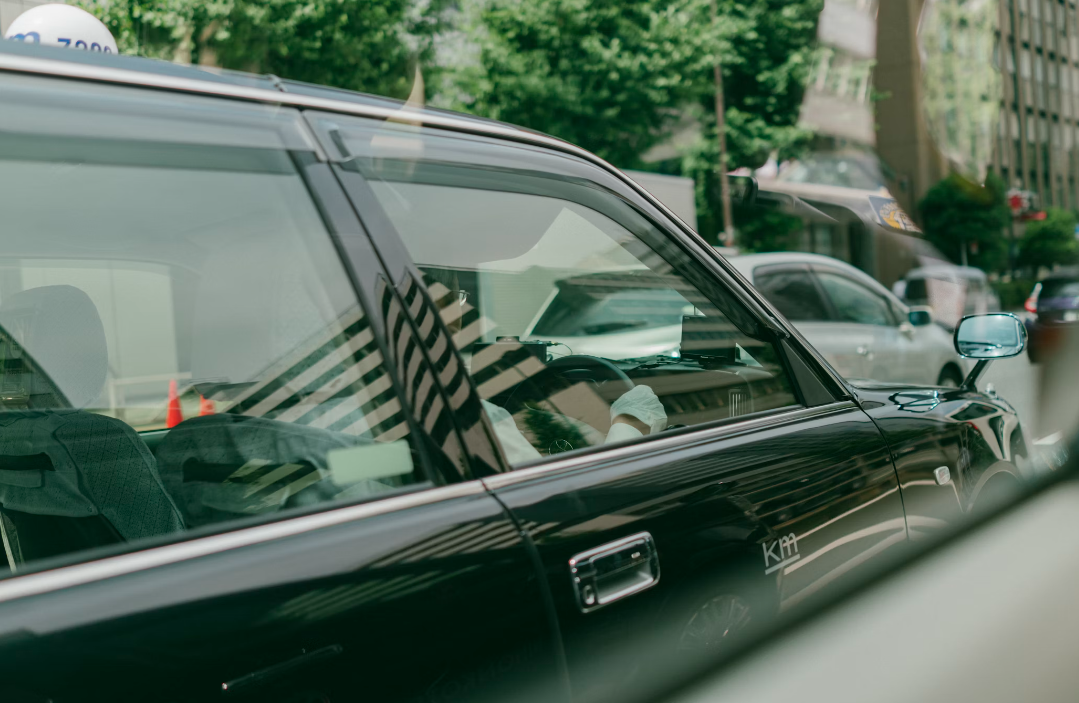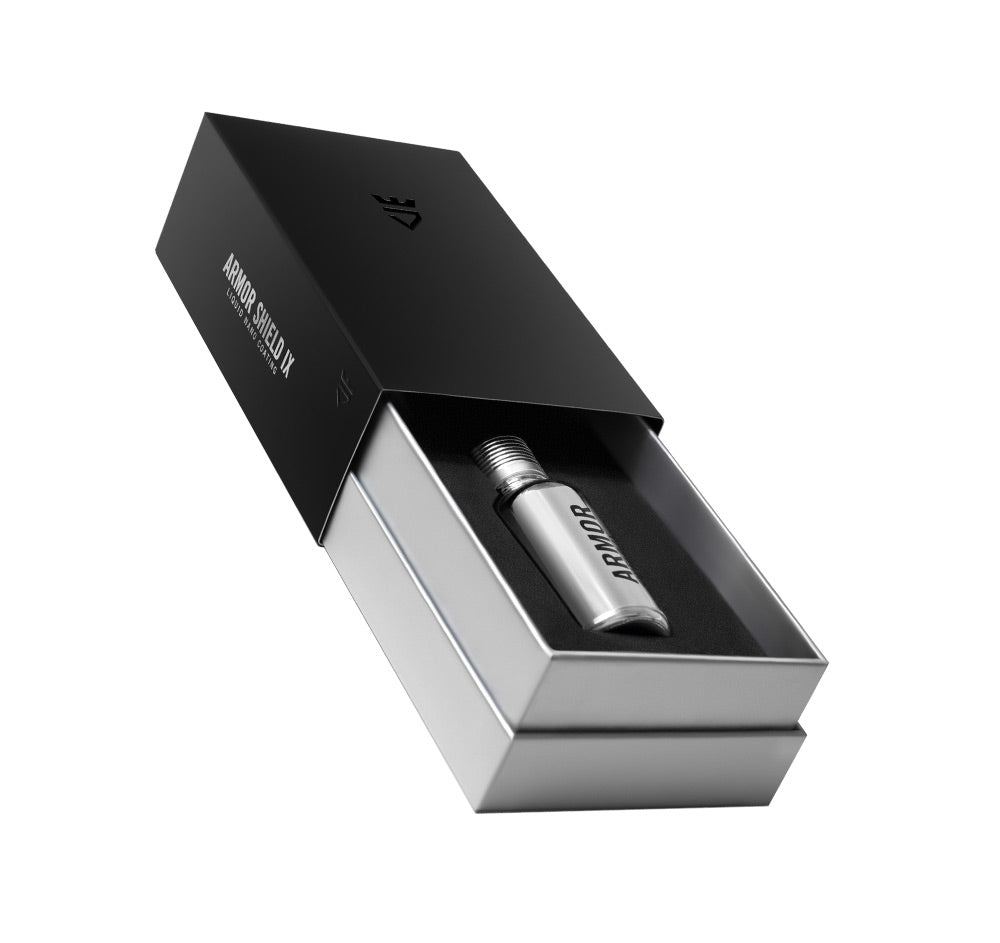Have you been contemplating the notion of tinting your car's windows, or even your windshield, but aren't exactly sure which product will provide the best level of protection and privacy, without causing your bank account to hemorrhage in agony?
With a crushing profusion of window tint options to choose from, and everyone claiming that their product is best, pulling the proverbial trigger on a particular window tint package can be intimidating.
Today, we'll go over the perks and problems associated with having one of the most common forms of window film installed on a vehicle: Carbon window tint. While some people swear by carbon tinting, others suggest steering clear of it, as the vast majority of the public has zero idea as to what carbon window film is in the first place.
There's a lot to like about having carbon particles embedded in your window tint, but even this ultraviolet light rejecting product needs its own armor and specialized care, and here's why...
Know Your Window Tint Options
In today's automotive world, you have four core window tint material options to choose from. While there are numerous sub-categories and proprietary formulas offered by manufacturers within each category, the following window film products make up the vast majority of what you see stretched across automotive glass.
Dyed Window Tint
Dyed window tint is engineered for drivers who are primarily concerned about privacy and cost. It's an affordable, entry-level window tint film, that blocks light and absorbs a dash of heat, but does not do diddly-squat for UV ray or infrared light rejection. Can be prone to fading and turning a purplish hue over time.
Metalized Window Tint
Utilizes microscopic metallic particles that have been impregnated in the film to add a shiny reflection that deflects light, heat, and UV rays. Prone to causing electrical interference issues with cellular services and GPS positioning devices.
Carbon Window Tint
Relies upon a carbon layer within the window film to reject infrared light and heat, while absorbing most harmful UV rays and reducing glare. Superior scratch resistance ratings make carbon window tint a terrific option on windows and sunroofs. Comes in a matte finish, and will not interfere with cellular or onboard infotainment system signals. Only rejects up to 50% of solar heat when under full sun exposure.
Ceramic Window Tint
Utilizes ceramic particles to reject heat, glare, UV rays, and glares of malice from the ass-hat in the lane next to you. Offers the highest range of visibility, protection, and longevity, with certain reinforced ceramic window film products boasting a "shatterproof" status. Can be quite expensive, and installers tend to upcharge for installation, even though it requires virtually the same procedures as other window films.
The Pros and Cons of Carbon Window Tint
Now that we have made it clear that carbon window tint is not nearly as resilient as ceramic window film, we must discuss its two biggest weaknesses: Solar heat rejection and visibility.
Whereas ceramic window film can offer anywhere from 70% to 90% solar heat rejection, carbon tint tends to land in the 40% range. Cheaper forms of carbon tint are also prone to creating glare at night and can cause objects to appear hazy-looking, so don't skimp on tint quality when it's install time.
Quality disclaimer complete, it's worth mentioning that carbon window tint is perfectly fine for those of us who don't live in climates that experience extreme heat or intense sun exposure. So if you find that the protection and perks listed below are ideal for your needs, then carbon tint is probably the ideal option.
- Zero electronic interference issues
- More affordable than ceramic tint
- Impressive scratch resistance ratings
- Will not fade or change color
- Rejects 40–50% of direct solar heat gain
- Deflects 99% of all UV rays
- Features a subtle, non-reflective matte shine
Quick Nerd Note: The average high-end carbon window film can provide a level of protection that is on par with a sunscreen sporting a 300 SPF rating! This explains why the Skin Cancer Institute strongly suggests installing a quality carbon or ceramic window film with UV rejecting properties on all applicable automotive glass, as it has been found to greatly reduce the risk of contracting skin cancer.
Protecting and Caring for Carbon Window Tint
One of the questions we get from time to time here at AvalonKing is whether or not it is safe to apply a ceramic coating directly to a tinted surface. We suggest erring on the side of caution by foregoing a direct application to tint, and here's why.
Although Armor Shield IX can safely be used on paint protection film (PPF), and even on a vinyl wrap, window tint is a bit of a grey area. Different tint manufacturers rely upon various film formulas and utilize a wide range of adhesives, some of which can be compromised by the chemical compounds found within a nano-ceramic coating liquid.
Since window film is always applied to the interior of automotive glass, your best bet is to apply that nano-ceramic coating to the outside of the glass and leave the cabin side untouched. The only thing that should ever hit window film is an ammonia-free automotive window cleaning chemical, and a super-fluffy multi-purpose microfiber towel.
That said, a properly maintained carbon window tint job can last upwards of a decade or more, and provide UV protection and heat reduction the entire time. Just remember, sloppy maintenance methods and spraying the wrong chemicals can result in premature peeling, cracking, and bubbling, so stick with the following window tint detailing steps for a safe and successful clean every time.
- To retain peak visibility and performance, make window tint cleaning a part of your car wash routine.
- Always clean car glass in a shaded area to prevent water spots and glass cleaner residue etchings from forming.
- Stock up on high-quality, edgeless microfiber buffing cloths, as they are the least prone to scratching tinted surfaces.
- When spraying glass cleaner, always apply it directly to a microfiber cloth, and not on the interior glass, as overspray may damage the upholstery on the door card.
- Have at least two microfiber towels on hand: One for applying and spreading the glass cleaner, the second for polishing and drying.
- Be sure that you only use ammonia-free glass cleaning chemicals to reduce the risk of damaging the integrity of the tint.
- Go light on the cleaning chemicals around window edges, for there is always the risk that it can eat into the finish via the untinted edges of the glass.
- Thoroughly dry tinted windows immediately after cleaning them with chemicals to reduce the risk of hazing and etching. This will also help build a resistance to glare.
Parting Shots
Certain producers of window tinting films, like SunTek, offer a product line that contains a couple of different products that contain carbon technology. The only difference between the two products (besides price) is that the higher dollar stuff has a greater level of solar energy rejection. This not only translates to how well it blocks glare but how it blocks heat, which has been linked to lowering the risk of cracking and fading on surfaces like upholstery and seats.
So while a ceramic window tint will always do a better job at providing UV protection and cooler interior temps, there is still a place for carbon tint in today's modern world. Carbon does an outstanding job of cutting cabin temps, blocking UV rays, deflecting infrared rays, and it comes in a slick matte finish that is immune to fading.
However, what neither of these products has is the ability to protect the exterior of the glass itself. Our suggestion is to add a layer of Armor Shield IX nano-ceramic coating to the outside of each window, as it will protect the integrity of the glass, and serve as the first line of defense against UV rays. It will also help prevent things like scratches and glass etchings from occurring, which as we all know, typically requires the replacement of the entire sheet of the glass sheet.
For more on how nano-ceramic coatings protect glass and other automotive components, be sure to check out AvalonKing's ultimate guide to ceramic coatings, as it will tell you everything you need to know about this revolutionary protective nanotechnology.










